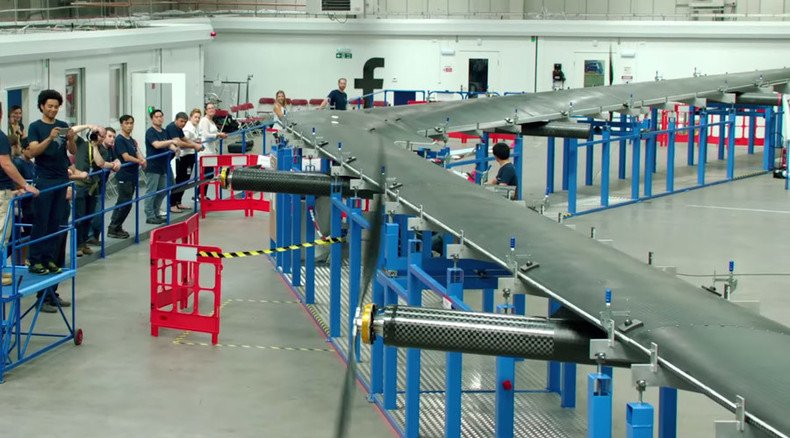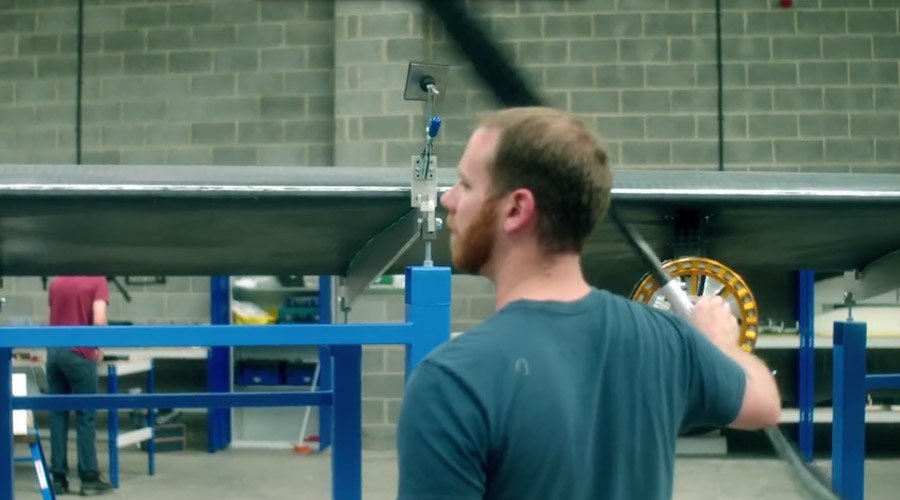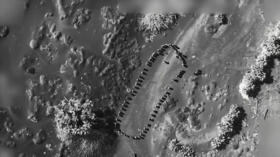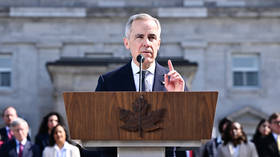Facebook to test solar-powered Boeing-737-sized ‘free internet access’ drone

Facebook is set to test its first solar-powered drone which is to provide internet access in remote areas. The wingspan of the aircraft is comparable with that of a Boeing 737, its inventors say.
The drone will weigh around 400kg and operate at altitudes of 18-27km – above the altitude of commercial planes, to ensure the aircraft is not affected by the weather, Yael Maguire, Facebook’s engineering director of connectivity, said.
The aircraft has been built over 14 months, and can allegedly spend 90 days at a time in the sky. Its wingspan is 42 meters, like the Boeing 737, however, due to “unique design and carbon-fiber frame”, it weighs much less.

The drone is raised into the air with helium balloons, Maguire added.
“Our mission is to connect everybody in the world. This is going to be a great opportunity for us to motivate the industry to move faster on this technology,” Jay Parikh, Facebook’s vice-president of engineering, told journalists.
READ MORE: ‘Gambling with lives’: Private contractors pick US drone targets, says report
Parikh added that Facebook isn’t going to sell the drones for other purposes than giving the internet access.
During the day, the Aquila will follow a 3km flight radius, flying between 80,000 feet (25km) and 90,000 feet (27km) above sea level.
At night, the aircraft is set to descend to 60,000 feet (18km) to save energy.

The data will be transmitted from a laser on the ground in California to the aircraft.
The solar-powered drone has been developed in the framework of the Aquila program, targeting 4 billion people who can’t access the internet, according to the latest Facebook data.
READ MORE: Virtual reality is next mass trend – Facebook’s Zuckerberg
The first tests are set to take place later this year or early 2016.
Another move was to launch the website internet.org, an initiative to give web access to almost 60 percent of the world’s population, who don’t have a reliable connection: in Colombia, India, Zambia and Tanzania - a hundred countries in total by the end of 2015.













